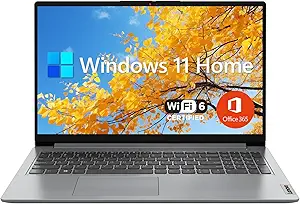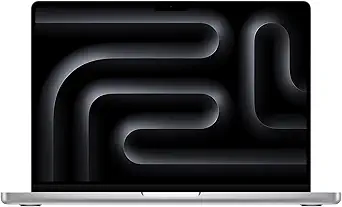In the dynamic landscape of laptop computing, two industry giants stand out among the rest: Apple and Lenovo. With their distinct approaches to design, performance, and innovation, these brands have cultivated loyal followings and sparked fervent debates among tech enthusiasts worldwide. As we embark on this journey of comparison, we aim to unravel the intricacies of Apple and Lenovo laptops, helping you navigate through the myriad of options to find the perfect match for your needs.
Key Features Comparison
Product Selection
When it comes to product selection, both Apple and Lenovo offer a variety of laptops that cater to different user needs. Apple's laptop range, mainly comprising of the MacBook Air and MacBook Pro series, are renowned for their sleek design, high-resolution Retina display, and powerful processors. They are preferred by professionals involved in graphic design, video editing, and other creative fields due to their superior display quality and seamless software integration. However, the product selection is limited in terms of customization options and they are generally more expensive compared to other brands. On the other hand, Lenovo's laptop selection is more diverse, with series like the ThinkPad, IdeaPad, and Yoga catering to different segments of consumers. The ThinkPad series, for instance, is highly regarded in the business sector due to its robust build and impressive battery life. The Yoga series, with its 2-in-1 flexibility, appeals to users seeking both a laptop and a tablet in one device. Lenovo also offers more customization options allowing users to choose specifications based on their needs and budget. However, some users have reported inconsistent quality across different models. In comparison to other brands, Lenovo offers a wider product selection catering to a broader market segment.
Affordability
When it comes to price, Apple laptops are generally considered to be more expensive than Lenovo laptops. Apple's latest offerings, such as the MacBook Pro and MacBook Air, are known for their high-end price tags, which is often justified by the brand's reputation for quality, durability, and top-tier specifications. For instance, the MacBook Pro 13-inch model with Apple's latest M1 chip starts at $1,299, while the MacBook Air with the same chip starts at $999. On the other hand, Lenovo offers a wider range of laptops at varying price points, making it a more accessible brand for budget-conscious consumers. Their latest laptops like the Lenovo ThinkPad X1 Carbon Gen 9 starts at $1,231 and the Lenovo IdeaPad Slim 7 starts at $899.99. Despite being more affordable, Lenovo laptops are known for their robust build, reliable performance, and business-friendly features. However, when compared to other brands in the same price range, Lenovo often offers better technical specifications, making it a value-for-money choice for many consumers.
Reputation
Apple laptops, particularly the MacBook series, have a stellar reputation in the market due to their sleek design, high performance, and robust security. They are often associated with quality and reliability, which is backed by their use of the latest technologies such as the M1 chip, Retina display, and macOS operating system. However, Apple laptops are known for their high price tags, which may not be affordable for all consumers. Also, their compatibility with non-Apple products and software is often criticized. On the other hand, Lenovo laptops have a reputation for offering a wide range of products to cater to different consumer needs, from budget-friendly models to high-end business laptops. Lenovo's ThinkPad series, for instance, is highly regarded for its durability, excellent keyboard, and long battery life. The latest models come equipped with advanced technologies like 10th Gen Intel Core processors, Dolby Vision HDR, and privacy features such as ThinkShutter. However, some users have reported issues with customer service and product reliability over time. Compared to Apple, Lenovo offers more flexibility in terms of price and configuration options, but it may not match the premium feel and cohesive ecosystem of Apple's MacBook series.
Battery Life
Apple and Lenovo are two of the leading laptop manufacturers in the world, each with their own unique strengths and weaknesses when it comes to battery life. Apple laptops, particularly the MacBook Air and MacBook Pro models, are known for their long-lasting batteries. The latest MacBook Air, for example, boasts up to 18 hours of battery life, thanks to its M1 chip technology, which is designed for energy efficiency. On the other hand, the MacBook Pro offers up to 20 hours of battery life, which is the longest battery life ever in a Mac. However, these laptops are relatively more expensive, which may not be ideal for budget-conscious consumers. Lenovo laptops, on the other hand, also offer impressive battery life, but the duration largely depends on the specific model. For instance, the Lenovo ThinkPad X1 Carbon can last up to 15.5 hours on a single charge, while the Lenovo IdeaPad S940 can last up to 15 hours. Lenovo laptops are generally more affordable than Apple laptops and they often come with Rapid Charge technology, which allows them to recharge up to 80% in just one hour. However, they may not be as energy-efficient as Apple laptops, especially when running high-performance applications. Therefore, while both brands offer laptops with excellent battery life, the choice between the two would depend on the user's specific needs and budget.
Display
Apple laptops, specifically the MacBook Pro and MacBook Air, are renowned for their high-quality Retina displays. The Retina display is a brand name used by Apple for its series of IPS panel and OLED displays that have a higher pixel density than traditional Apple displays. These screens offer a crisp, clear, and vibrant display, with a resolution of up to 2560 x 1600 pixels on the MacBook Pro and 227 pixels per inch on the MacBook Air. The MacBook Pro also supports the P3 wide color gamut, which provides more vibrant greens and reds than sRGB. However, these high-quality displays come at a premium price, which may not be within everyone's budget. On the other hand, Lenovo laptops, such as the ThinkPad X1 Carbon and Yoga series, also offer high-quality displays but at a more affordable price range. The X1 Carbon features a 14-inch screen with up to 4K (3840 x 2160) resolution, while the Yoga series offers a 13.3-inch screen with a resolution of 1920 x 1080 pixels. While these displays may not be as vibrant as Apple's Retina display, they still offer sharp and clear images, and some models also support HDR, which enhances the contrast and color range. However, the color accuracy and brightness on Lenovo laptops may not be as high as on Apple laptops. When compared to other brands, both Apple and Lenovo laptops offer superior display quality, but Apple's Retina display is often considered the gold standard in laptop displays.
Conclusion
In the grand debate of Apple vs. Lenovo laptops, there is no clear winner, as both brands offer compelling options tailored to different preferences and priorities. Apple excels in design and integration, delivering a seamless user experience powered by its proprietary hardware and software ecosystem. Meanwhile, Lenovo shines in versatility and affordability, offering a diverse lineup of laptops designed to meet the needs of a broad spectrum of users. Ultimately, the choice between Apple and Lenovo laptops depends on individual preferences, whether it's a preference for style and innovation or value and versatility. Whichever path you choose, both Apple and Lenovo continue to push the boundaries of laptop technology, driving innovation and inspiring users worldwide. So, whether you're team Apple or team Lenovo, rest assured that the future of laptop computing is in capable hands, thanks to these two industry titans.


















